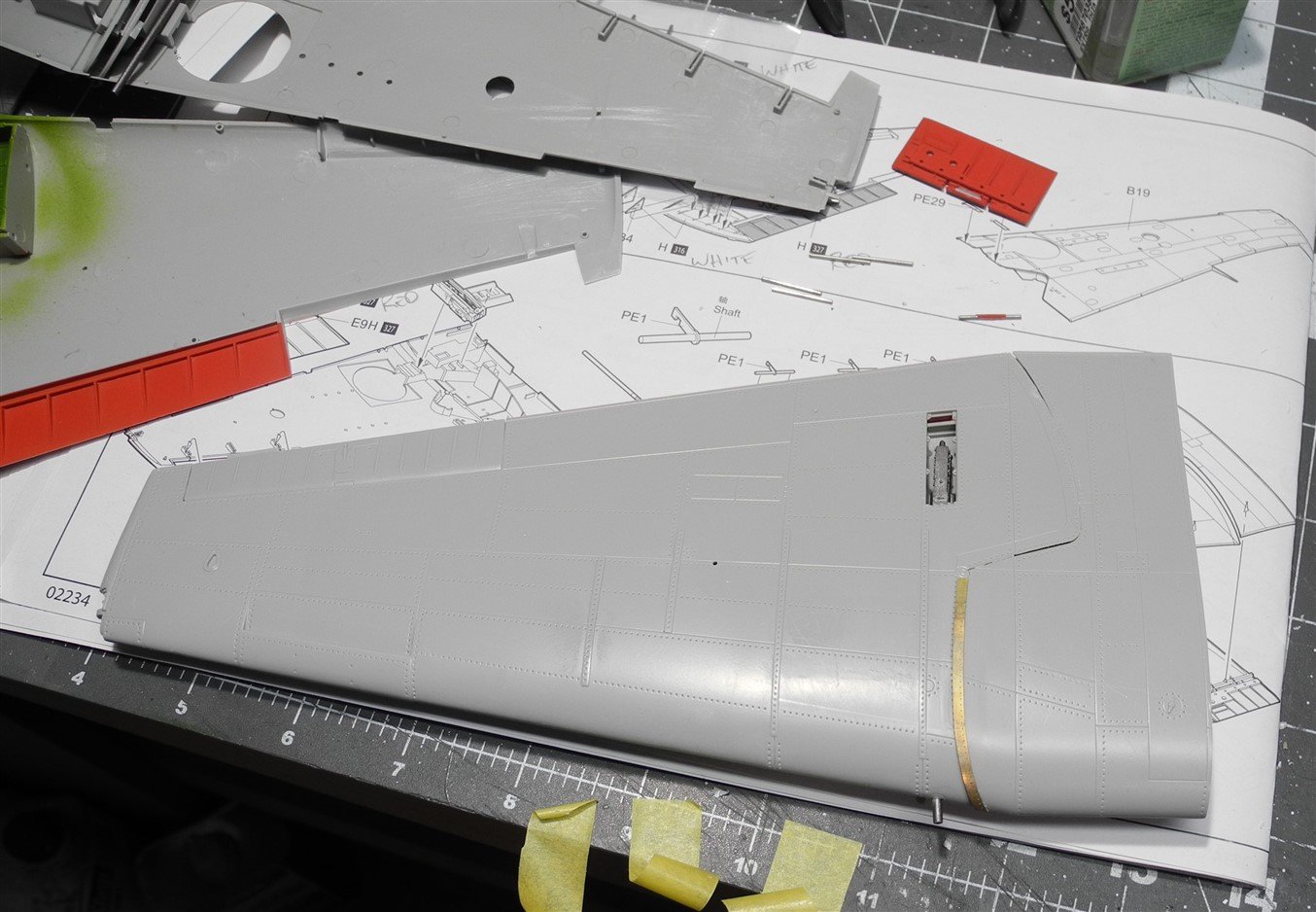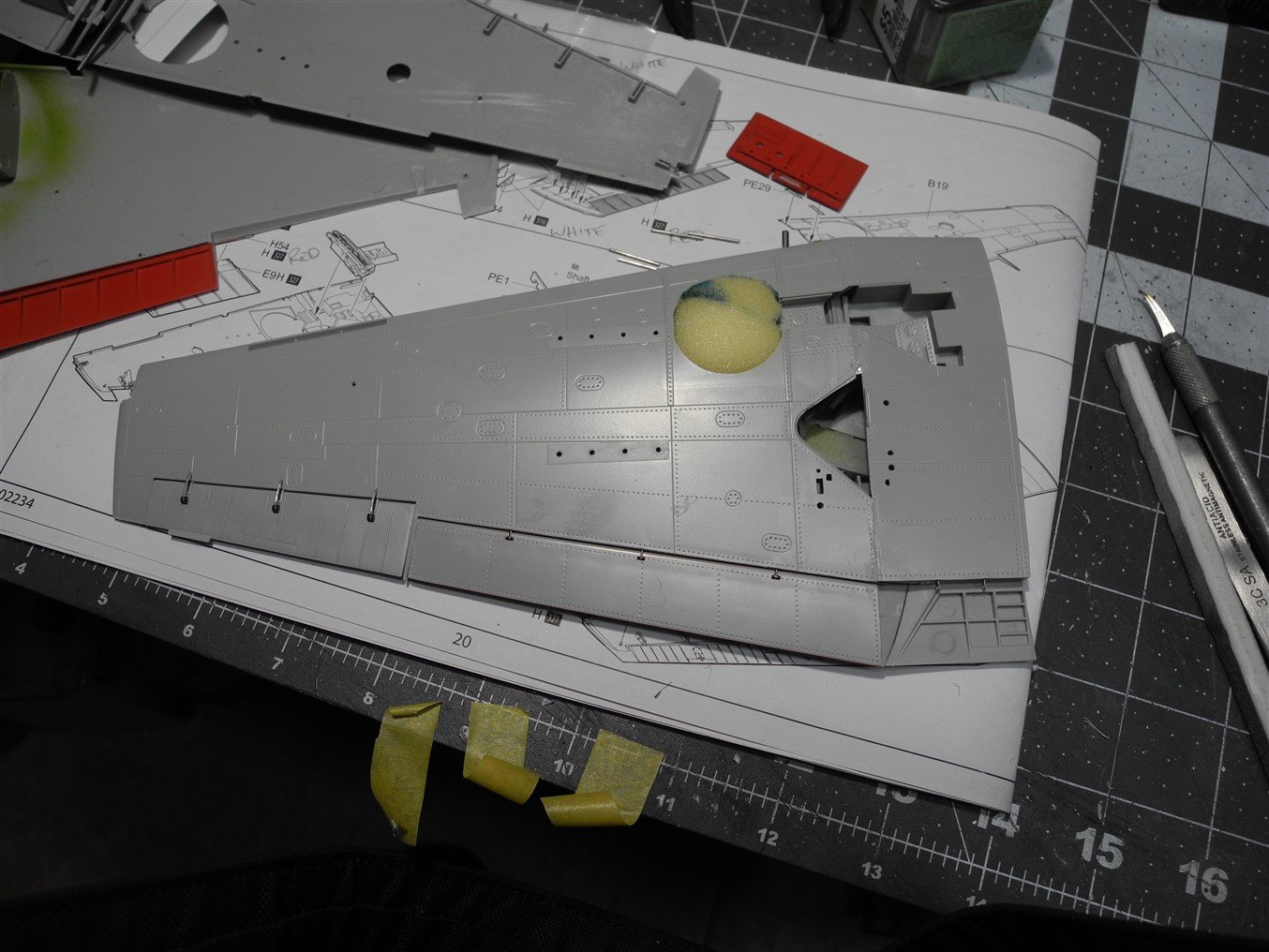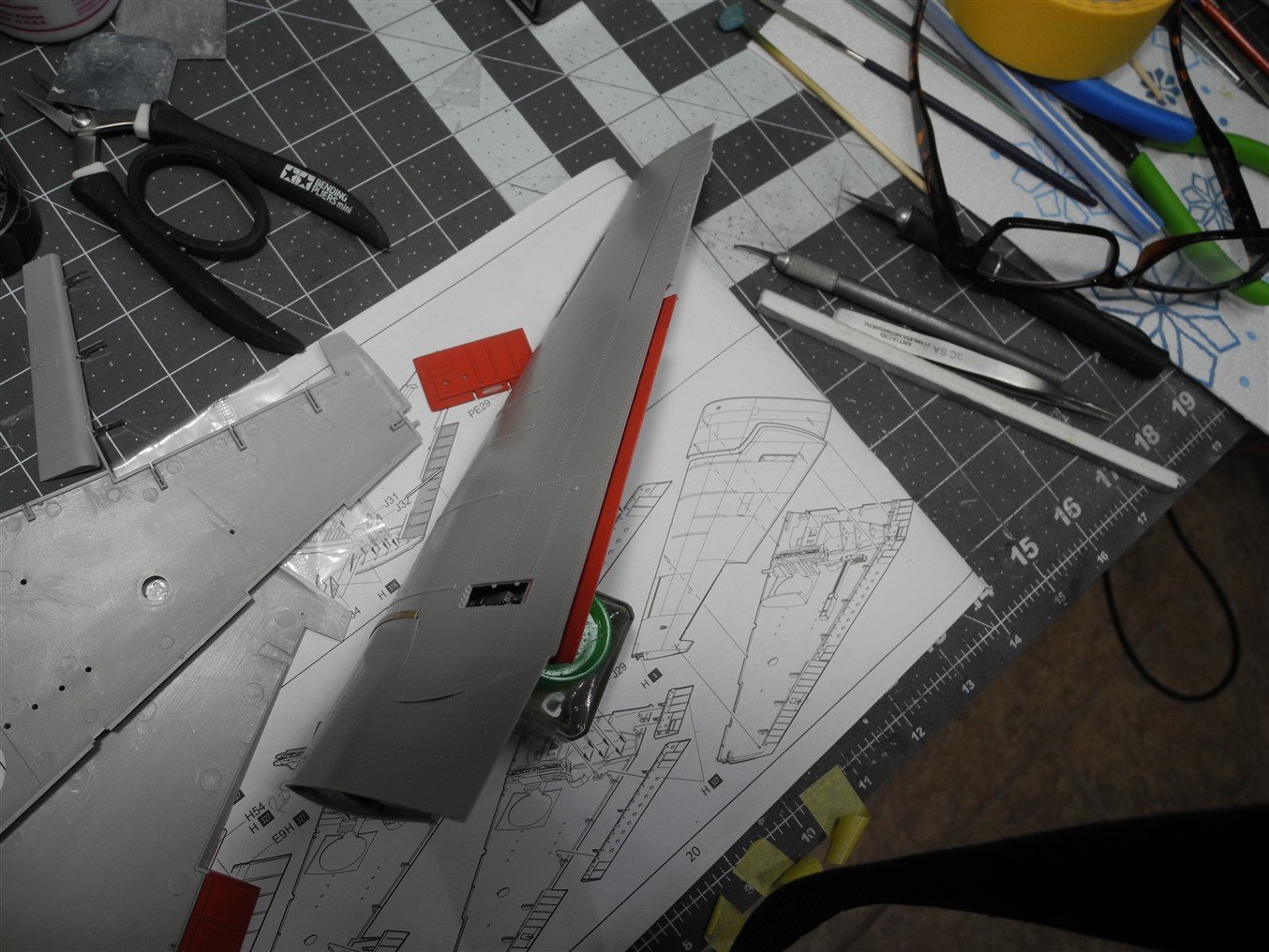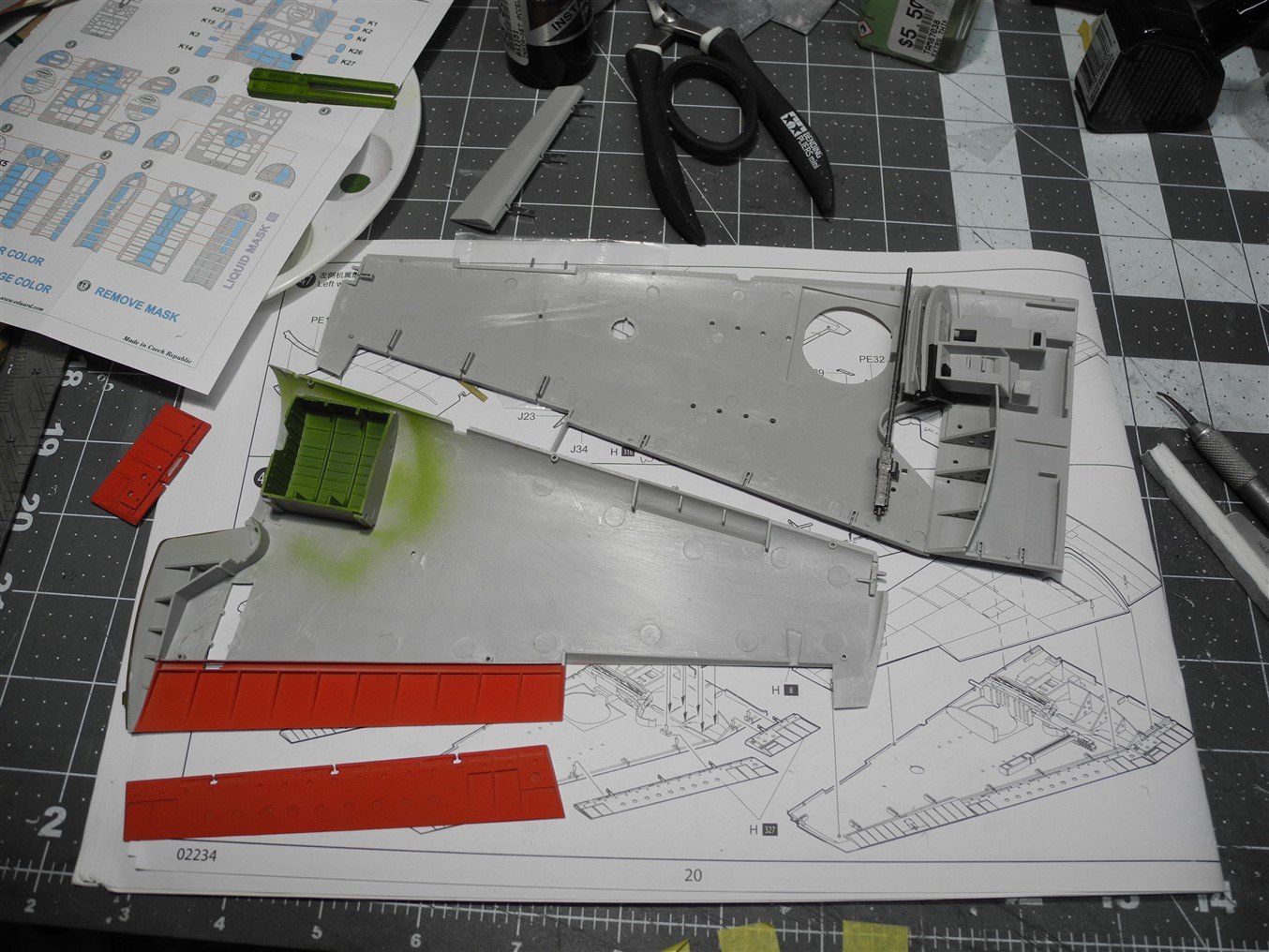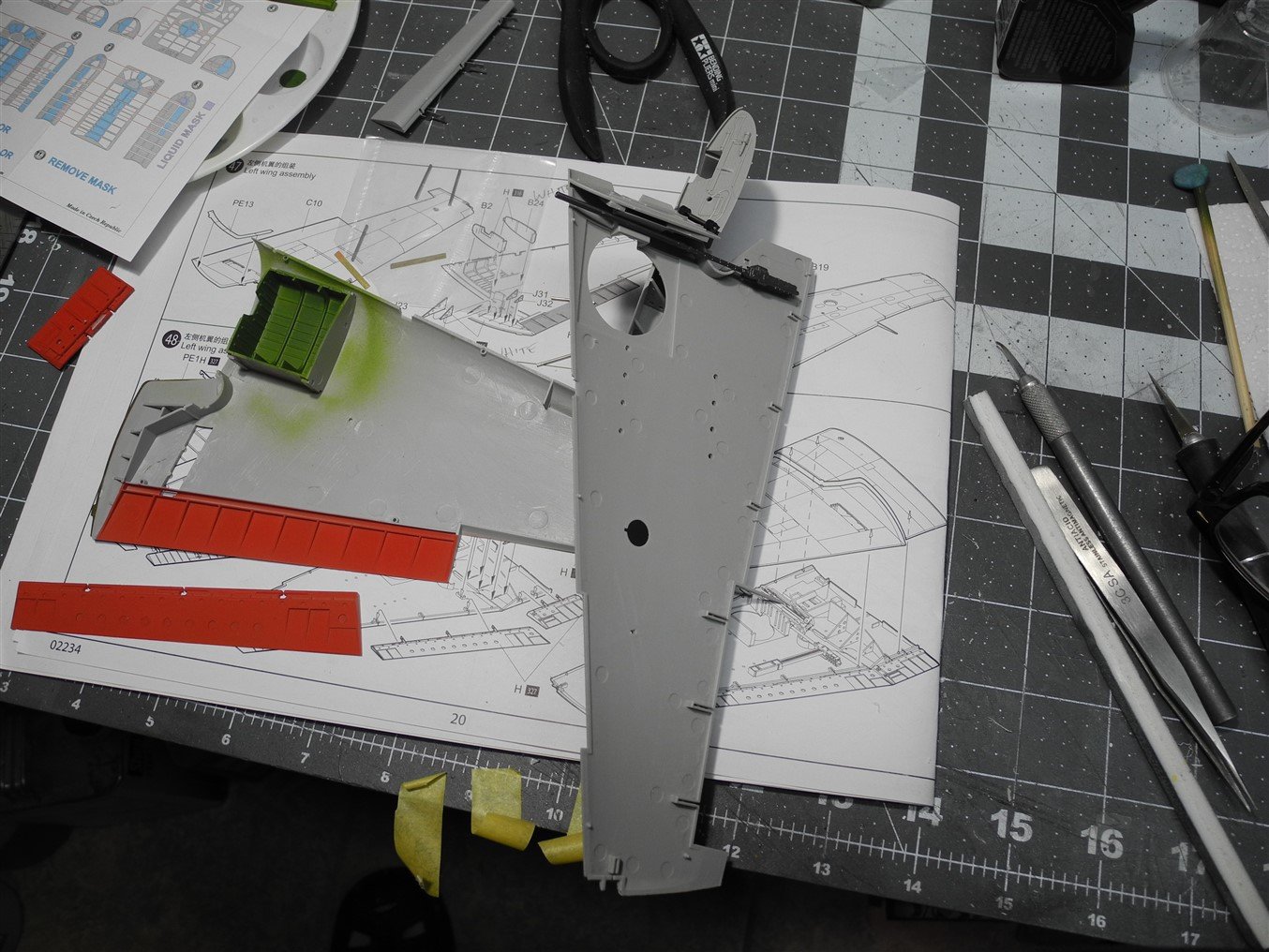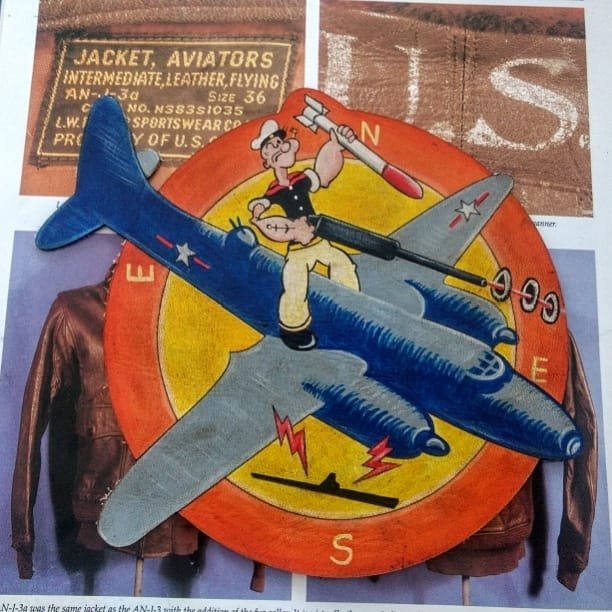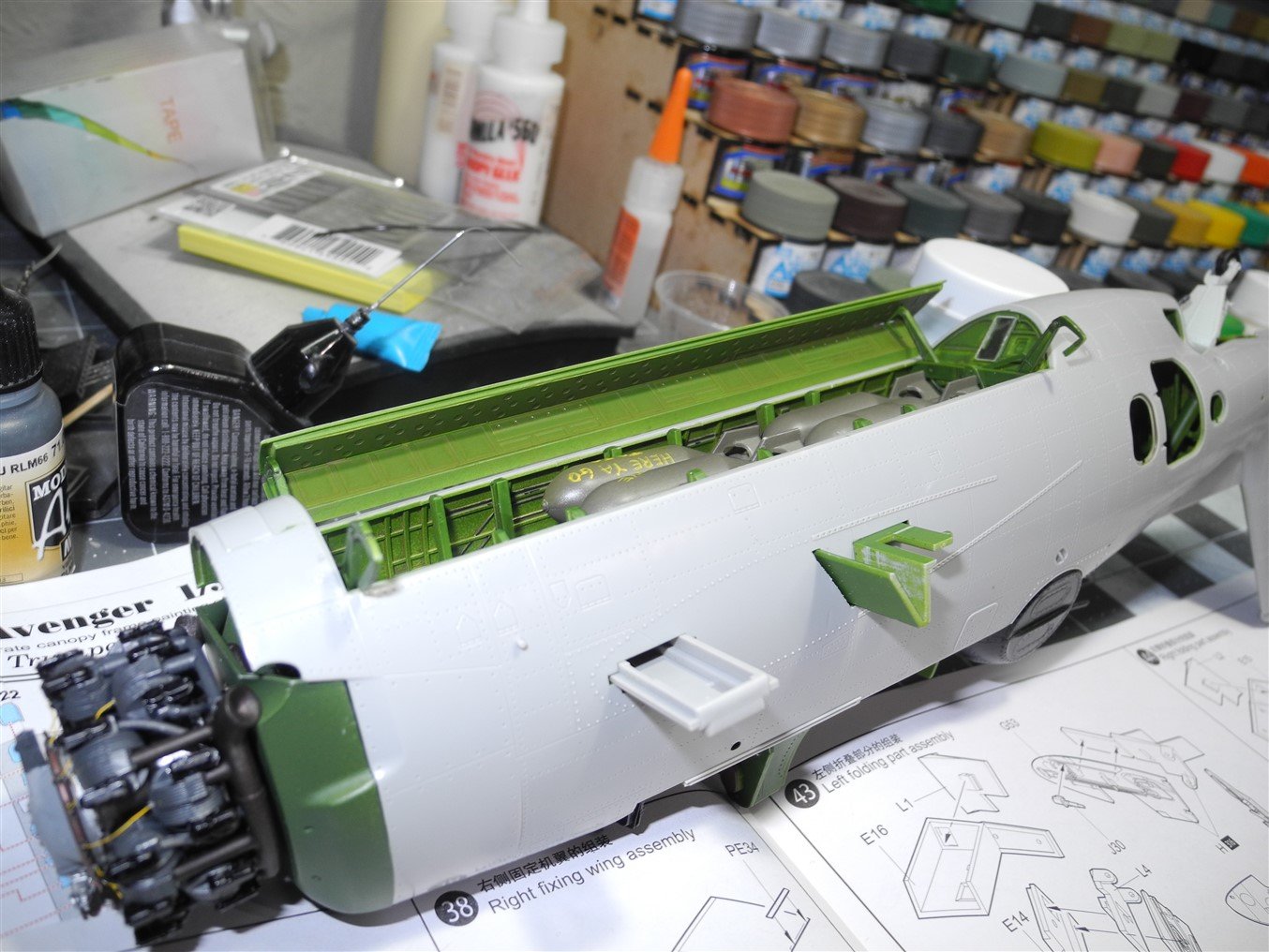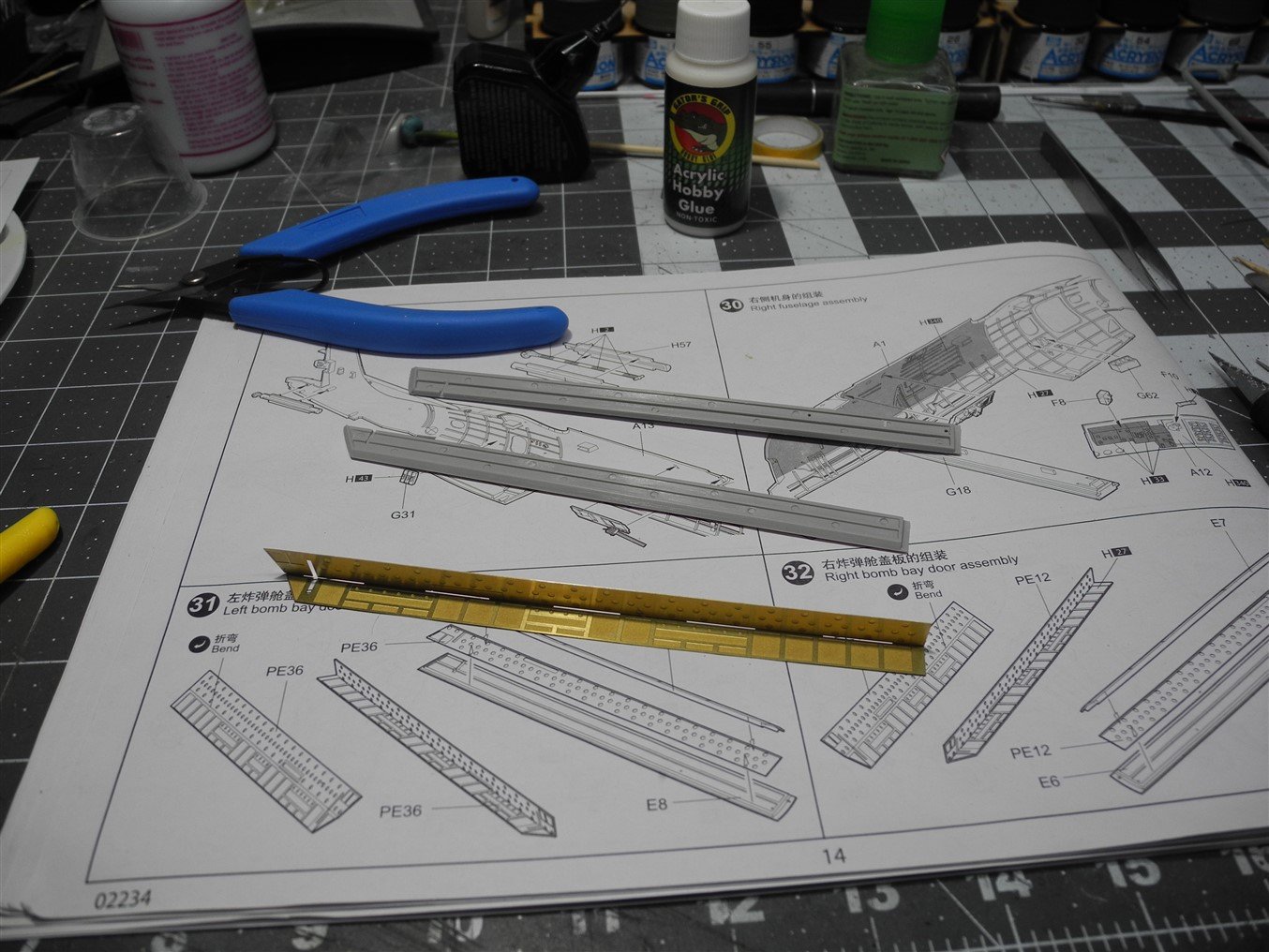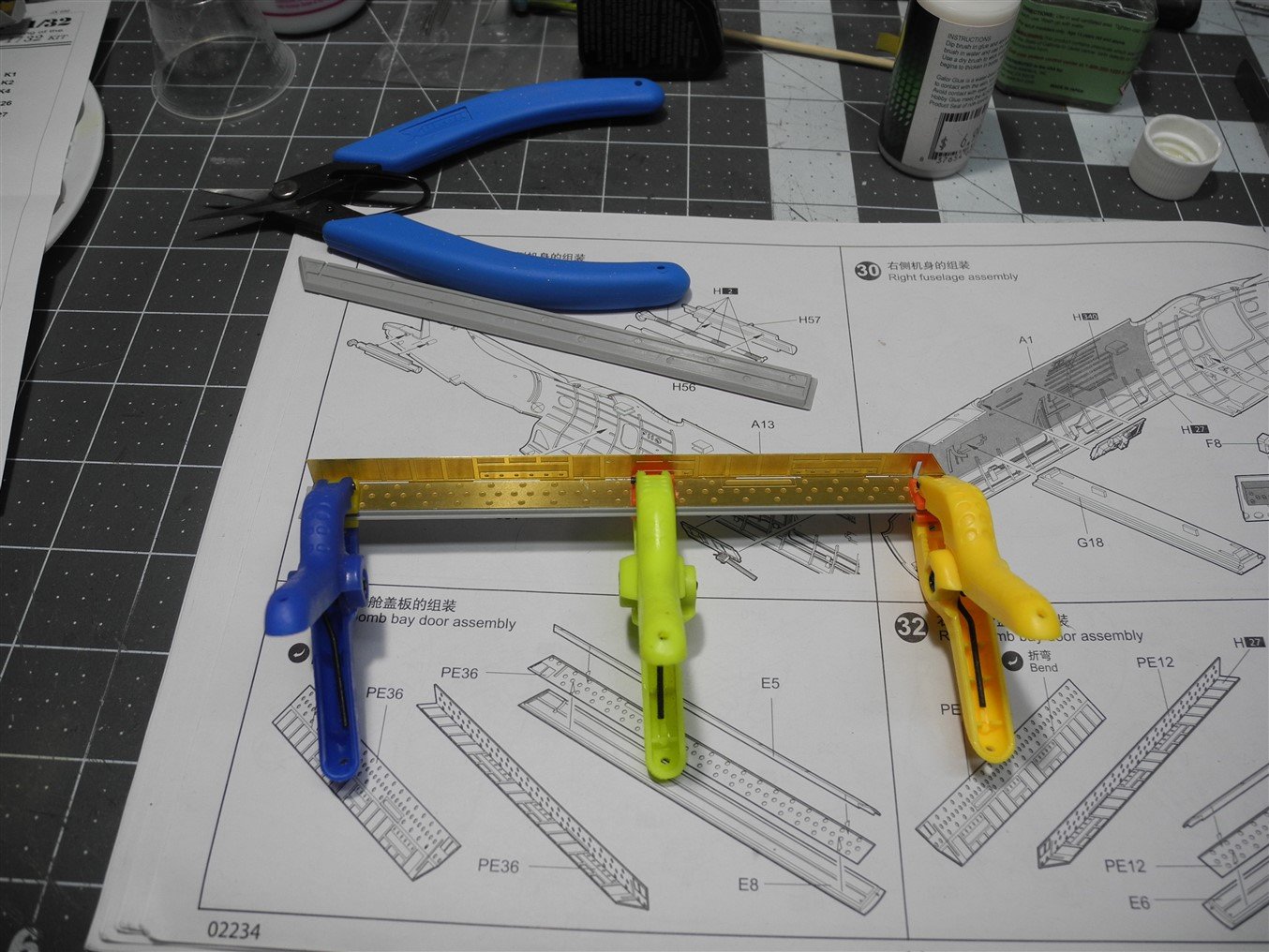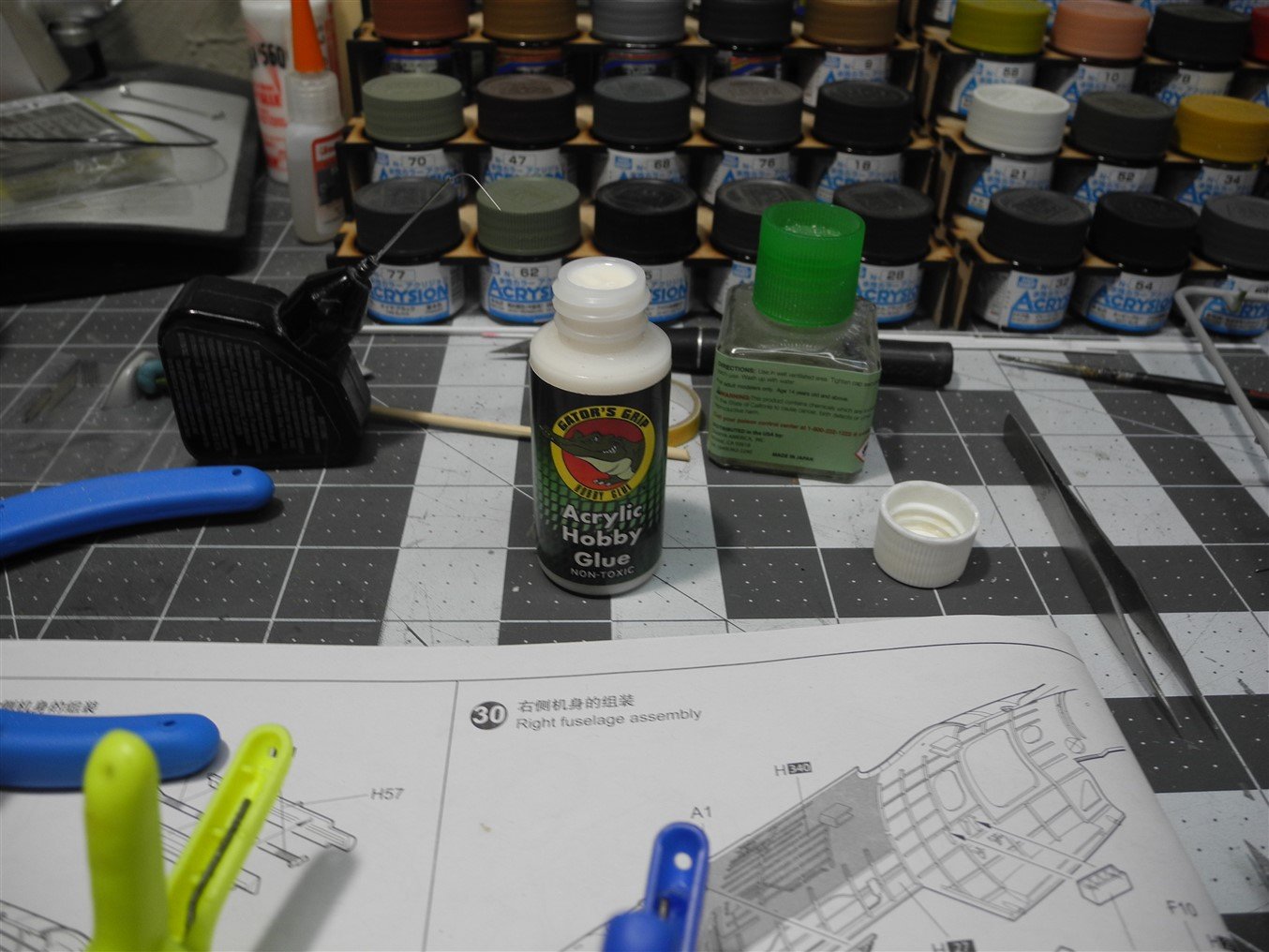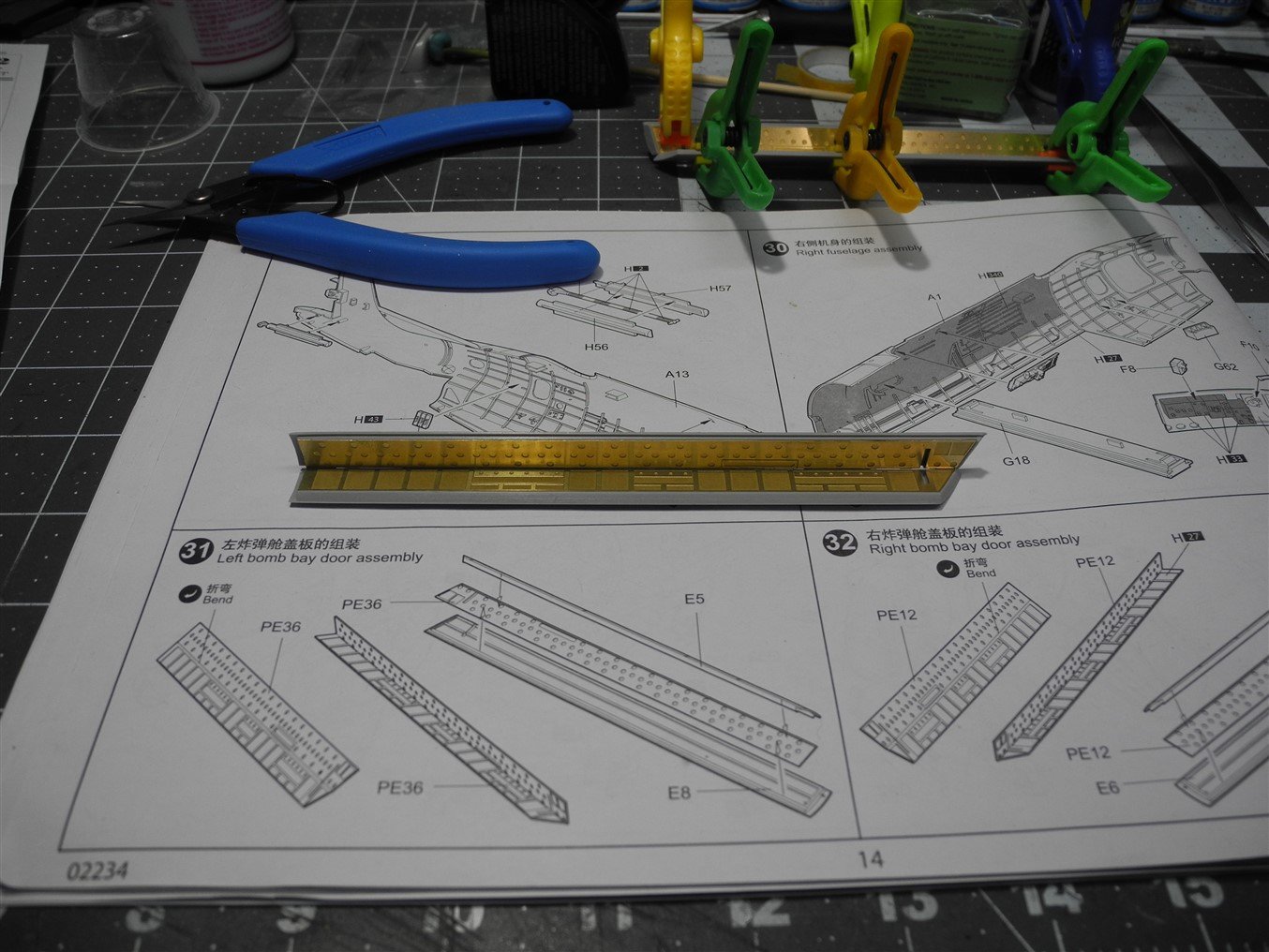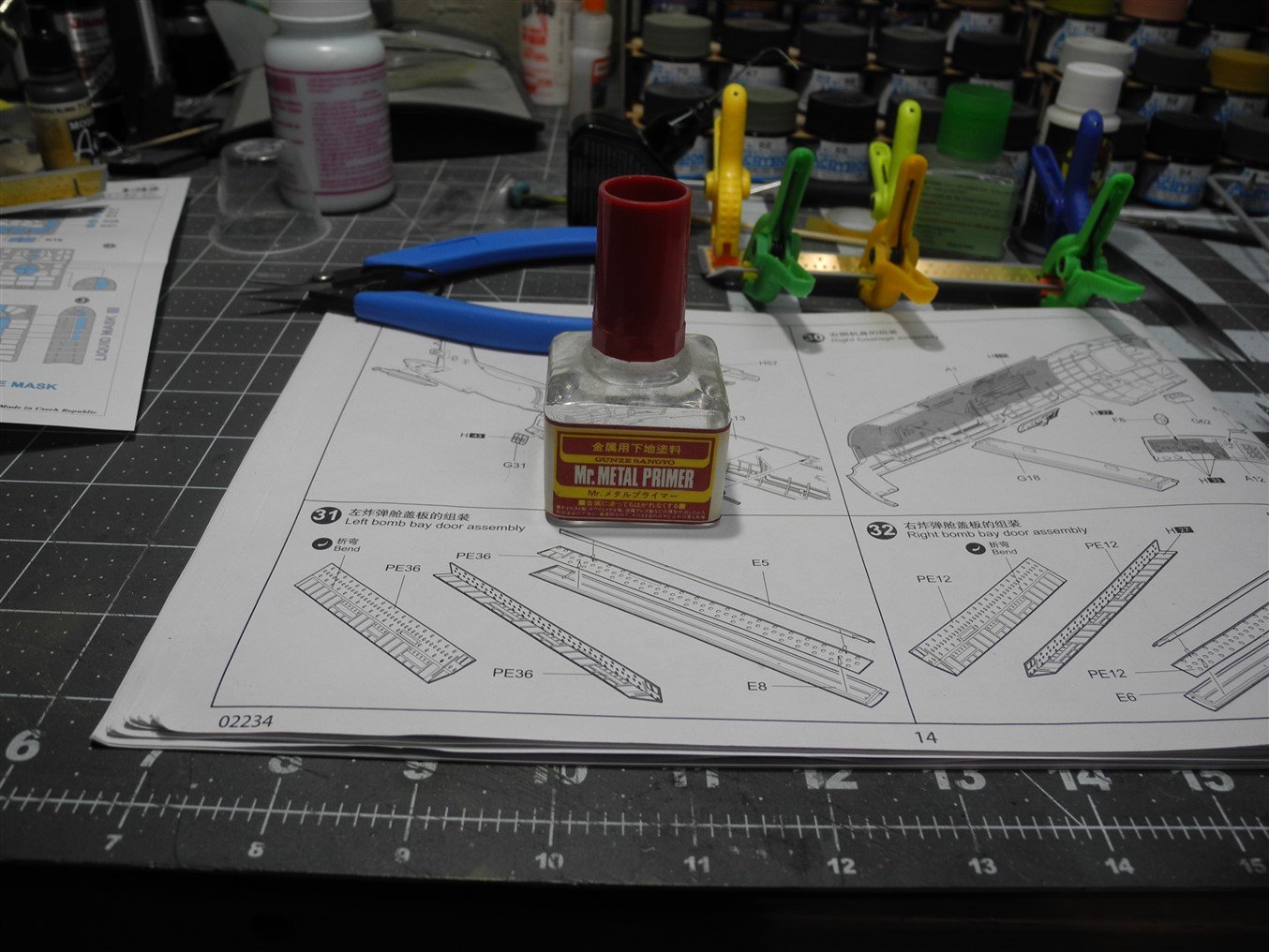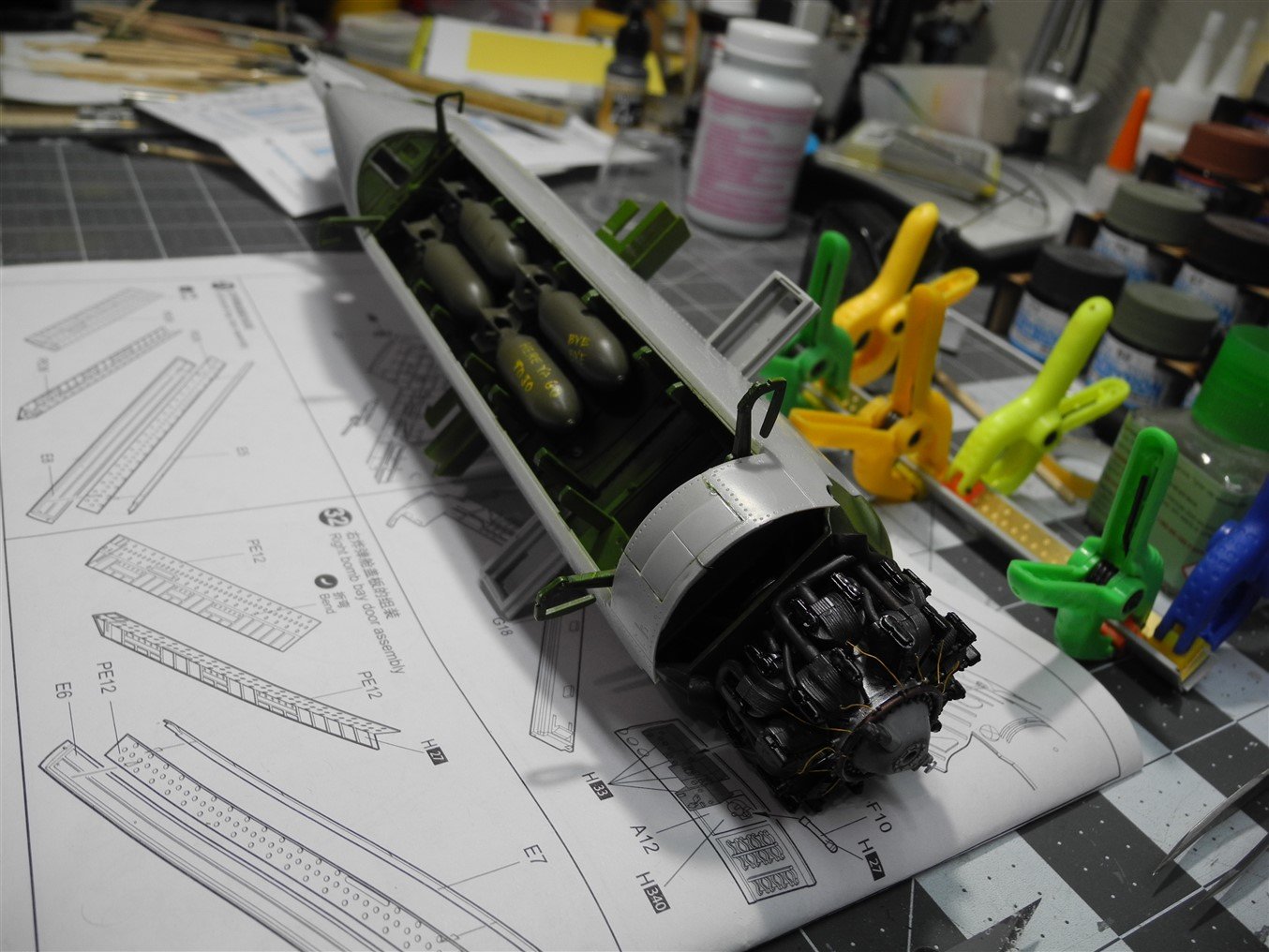-
Posts
7,736 -
Joined
-
Last visited
Content Type
Profiles
Forums
Gallery
Events
Everything posted by CDW
-
Finally completed the painting of our house last week, but this week got started on our detached garage. This morning, visited an outlet called, Habitat for Humanity, where they sell new and used home/building construction materials for charity fund raising. They have excellent bargains on a large variety of useful items. I picked up a brand new solid core door for my garage for a measly $45...my kind of deal. Brought it home and installed it and painted it, then pressure washed our garage in preparation of painting. Tomorrow we may get rain so I could get more modeling time in if I'm lucky. Here's what I've been doing in between other chores. Wing construction. The wings have some working features built in including a wing fold mechanism, working flaps and ailerons, machine gun and ammo box/chute details, removable gun access covers. I don't care much for working features on my models, but will probably pose my flaps as dropped. I am picturing the wing fold mechanism just so you can see it but plan to glue the wings in the extended position. Photo etch strips cover the gaps where the wings close together. In the photos, you can see one of the strips in position with the others to be added. The Avenger wings have a massive chord length, likely meaning they give lots of lift for heavy bomb loads.
-

B-25 Mitchell "Meet Miss Runyon" by Javlin-HK-1/32
CDW replied to Javlin's topic in Non-ship/categorised builds
Silver can be a bear. Every little imperfection shows itself. Great job, looks super. -

B-25 Mitchell "Meet Miss Runyon" by Javlin-HK-1/32
CDW replied to Javlin's topic in Non-ship/categorised builds
What will you use for the silver? -

B-25J Mitchell by Tom E - Revell - 1:48 Scale - PLASTIC
CDW replied to Tom E's topic in Non-ship/categorised builds
Tom Excellent choices to start. I hope all the best for your endeavor. Looking forward to following your progress. -

SBD-3 Dauntless 1:48 Hasegawa - Edwardkenway-FINISHED
CDW replied to Edwardkenway's topic in Non-ship/categorised builds
Amazon has great customer service. I'm confident they will take care of you in this matter. -
Mike, the applicability of acrylic glue is going to vary on particular jobs depending on the specific parts (as you referenced) as well as the experience the individual has in using acrylic glue. Like a lot of other things, we get better at it with time and practice. One thing for sure, you don't use it exactly the same as you would use CA, as with CA, you're trying to use as little of it as possible to avoid a big mess. With acrylic glue, you can use more of it and clean it all up later with a wet paint brush before the glue completely dries. I find acrylic glue is particularly well suited for ship railings. Sometimes the difficulty comes from trying to use too large of a section of railing at a time. I often cut my railings into smaller sections and find it makes working with it much easier. I cut the railing to the length I want at a vertical post, then use a smidgen of overlap of the rails on the subsequent vertical post to mate them together. When using it, don't be afraid to use a larger drop of it where the photo etch is to be attached as it will be very easy to clean up later. A good way to get practice is to use scrap pieces of railing and just glue them down on a piece of sheet styrene plastic. The little blobs of glue you put down will be enough to hold the railing in a vertical position until it starts to get tacky and once tacky use your wet paint brush to clean up the excess glue around your posts.
-

SBD-3 Dauntless 1:48 Hasegawa - Edwardkenway-FINISHED
CDW replied to Edwardkenway's topic in Non-ship/categorised builds
Oh wow...didn't see this. What a disappointment. Hope Hasegawa comes through for you with flying colors. -

SBD-3 Dauntless 1:48 Hasegawa - Edwardkenway-FINISHED
CDW replied to Edwardkenway's topic in Non-ship/categorised builds
Your Hasegawa Dauntless will look great right out of the box. Can't beat Hasegawa and Tamiya models for a positive out of the box experience. Looking forward to your progress. Love the tri color scheme as well. -
The Avenger model comes with a set of bi-fold bomb bay doors. The doors are enhanced with a fully photo etch lined inner door detail provided stock in the kit. Often, modelers ask what type of glue to use for photo etch. While CA glue has it's place in the scheme of things, my personal favorite most of the time is acrylic glue. Why? *The slower drying time gives plenty of latitude for positioning the part without it inadvertently adhering too soon. *It dries completely clear with no fogging. *It dries very thin without a buildup. *It cleans up with water. *It's a more flexible bond, not brittle like CA. I can easily clean up any excess glue with a paint brush wetted with water to eliminate any sign of the glue on the finished model. Another question modelers often ask, what is the best primer for photo etch? My choice is Mr Metal Primer. *It is a solvent based primer, and completely transparent. *It adheres very well to photo etch and mostly eliminates the chance of the finished paint color peeling away from the photo etch. *It can be brushed onto delicate photo etch parts and is self leveling. *Dries quickly. *Since it has no color pigments, it will not obliterate the fine surface details that photo etch is meant to provide. The kit provides pre shaped bomb bay hinges for the doors to attach in a bi-fold fashion.
-
Hi Denis Just found your build log for the Agilis. Wanted to follow along to learn a thing or three. There are more than a few wooden ship models in my stash, but it's outside the sphere of my comfort zone. I'm a neophyte wood ship modeler. Maybe following some guys who are experts such as you and JCT will give me the confidence boost I need to start one of my own.
-

Sikorsky CH-53 by mtaylor - FINISHED - Revell - 1:48 - PLASTIC
CDW replied to mtaylor's topic in Non-ship/categorised builds
As others have said, the order to follow is: gloss coat where the decal is to be placed microset under the decal microsol over top of the decal flat clear coat over decal when it's dry I've run into the same issue with model master flat clear - it dries milky. Tamiya flay clear is my go-to for that purpose. As you said, never over brush. Let the clear settle itself over the area where applied. Otherwise, you will leave brush marks. PS: if you have any Future, it works perfectly as your gloss clear coat under decals and it works perfectly when brushed on. -
There are a lot of critters to ruin your swimming in Fla lakes. Water Moccasins, gators, parasites, etc. As a Fla native, I don't swim in lakes but we used to do it a lot as kids. The water was cleaner back then before the massive population increase and urbanization which brought a lot of pollutants to our lakes through rainwater runoff, not the least of which is fertilizer and heavy metals (from automobiles).
About us
Modelshipworld - Advancing Ship Modeling through Research
SSL Secured
Your security is important for us so this Website is SSL-Secured
NRG Mailing Address
Nautical Research Guild
237 South Lincoln Street
Westmont IL, 60559-1917
Model Ship World ® and the MSW logo are Registered Trademarks, and belong to the Nautical Research Guild (United States Patent and Trademark Office: No. 6,929,264 & No. 6,929,274, registered Dec. 20, 2022)
Helpful Links
About the NRG
If you enjoy building ship models that are historically accurate as well as beautiful, then The Nautical Research Guild (NRG) is just right for you.
The Guild is a non-profit educational organization whose mission is to “Advance Ship Modeling Through Research”. We provide support to our members in their efforts to raise the quality of their model ships.
The Nautical Research Guild has published our world-renowned quarterly magazine, The Nautical Research Journal, since 1955. The pages of the Journal are full of articles by accomplished ship modelers who show you how they create those exquisite details on their models, and by maritime historians who show you the correct details to build. The Journal is available in both print and digital editions. Go to the NRG web site (www.thenrg.org) to download a complimentary digital copy of the Journal. The NRG also publishes plan sets, books and compilations of back issues of the Journal and the former Ships in Scale and Model Ship Builder magazines.

.jpg.7e80607770d9078b2f0b470e8c9c33ac.jpg)
